Related Research Articles

The Pluteaceae are a family of small to medium-sized mushrooms which have free gill attachment and pink spores. Members of Pluteaceae can be mistaken for members of Entolomataceae, but can be distinguished by the angled spores and attached gills of the Entolomataceae. The four genera in the Pluteaceae comprise the widely distributed Volvariella and Pluteus, the rare Chamaeota, and Volvopluteus, which was newly described in 2011 as a result of molecular analysis. The Dictionary of the Fungi estimates there are 364 species in the family.

Clitocybe is a genus of mushrooms characterized by white, off-white, buff, cream, pink, or light-yellow spores, gills running down the stem, and pale white to brown or lilac coloration. They are primarily saprotrophic, decomposing forest ground litter. There are estimated to be around 300 species in the widespread genus.

Lepista is a genus of mushroom-forming fungi. According to the Dictionary of the Fungi, the widespread genus contains approximately 50 species. In 1969, Howard Bigelow and Alex H. Smith designated the group as subgenus of Clitocybe.

Melanoleuca is a poorly known genus of saprotrophic mushrooms traditionally classified in the family Tricholomataceae. Most are small to medium sized, white, brown, ocher or gray with a cylindrical to subcylindrical stipe and white to pale yellowish gills. The basidiospores are ellipsoid and ornamented with amyloid warts. Melanoleuca is considered a difficult group to study due to their macroscopic similarities among species and the need of a thorough microscopic analysis to separate species. DNA studies have determined that this genus is closely related to Amanita and Pluteus and that it does not belong to the family Tricholomataceae.
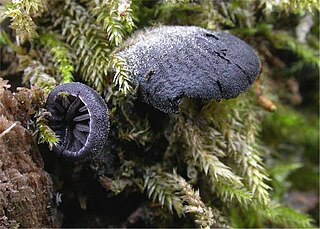
Resupinatus is a genus of fungi in the family Tricholomataceae. Species are saprobic, and often found growing on the underside of decaying wood or sides of decaying woody substrates. The generic name is derived from the Latin resupinus.
Haasiella is a fungal genus in the family Hygrophoraceae. It is a monotypic genus that contains only the species Haasiella splendidissima. Haasiella venustissima, formerly considered to be a distinct species based on its one and two-spored basidia, was found by a DNA study to be synonymous with H. splendidissima. H. splendidissima is only known from Europe and is saprotrophic on wood. Haasiella was described as a new genus in 1966 by Czech mycologists František Kotlaba and Zdeněk Pouzar. It is most closely related to the genus Hygrophorus.

Melanoleuca melaleuca is a species of mushroom in the family Tricholomataceae, and it is the type species of its genus Melanoleuca. It is difficult to distinguish from other related species firstly because it is variable, secondly because the taxonomic criteria are often based on characteristics which have later been found to be variable, and thirdly because there is much disagreement between authorities as to exactly how the species should be defined.

Gymnopilus maritimus is a fungus species of the family Hymenogastraceae first collected in northern Sardinia, Italy, in 2006. The species produces moderately sized, sturdy mushrooms of a reddish-orange colour. The cap, which can measure up to 70 millimetres (3 in) across, is covered in orange fibrils, and sometimes has small scales. The yellowish stem measures up to 110 mm (4 in) in length by 8 mm (0.3 in) in width, and sometimes shows remnants of the partial veil. The mushrooms have thick gills of a variable colour, ranging from yellow to rust but staining darker, and the yellow flesh has a mild taste. The mushrooms leave a rusty-brown spore print, while the spores themselves measure from 7.5–11.5 micrometres (0.00030–0.00045 in) in length. The species is most similar in appearance to G. arenophilus and G. fulgens, but can be differentiated from both morphologically. Despite the similarities, it is not closely related to either, suggesting convergent evolution. Instead, within the genus Gymnopilus, it is most closely related to the spectabilis–imperialis clade. However, it is not particularly similar to any of its closest relatives.
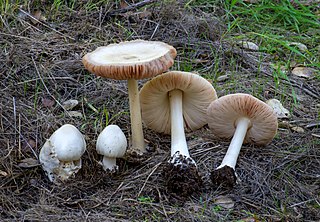
Volvopluteus gloiocephalus, commonly known as the big sheath mushroom, rose-gilled grisette, or stubble rosegill, is a species of mushroom in the family Pluteaceae. For most of the 20th century it has been known under the names Volvariella gloiocephala or Volvariella speciosa, but recent molecular studies have placed it as the type species of the genus Volvopluteus, newly created in 2011. The cap of this mushroom is about 5–15 cm (2–6 in) in diameter, varies from white to grey or grey-brown, and is markedly sticky when fresh. The gills start out as white but they soon turn pink. The stipe is white and has a sack-like volva at the base. Microscopical features and DNA sequence data are of great importance for separating V. gloiocephalus from related species. V. gloiocephalus is a saprotrophic fungus that grows on grassy fields and accumulations of organic matter like compost or woodchips piles. It has been reported from all continents except Antarctica.
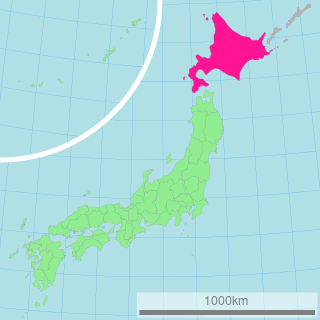
Volvopluteus asiaticus is a species of mushroom in the Pluteaceae family. The cap of this mushroom is about 70–90 mm (2.8–3.5 in) in diameter, greyish brown to brown. The gills start out white but they soon turn pink. The stipe is white and has a volva at the base. Microscopical features and DNA sequence data are of great importance for separating this taxon from related species. V. asiaticus is a saprotrophic fungus that was originally described as growing on the ground, in the humus layer. It is only known from Hokkaido (Japan).

Saproamanita nauseosa is a species of agaric fungus in the family Amanitaceae. First described by English mycologist Elsie Maud Wakefield in 1918 as a species of Lepiota, it was named for its nauseating odor. The type specimen was found growing on soil in the Nepenthes greenhouse at Kew Gardens. Derek Reid transferred the species to Amanita in 1966, and then in 2016 the separate genus Saproamanita was created by Redhead et al. for saprophytic Amanitas and it was transferred to this new genus.

Crassisporium is a burn-inhabiting agaric fungal genus that colonizes forest fire and campfire sites on ground and charred woody debris in Europe, north Africa and western North America. The small brownish fruitbodies have broadly attached lamellae bordered by cheilocystidia and there is an absence of pleurocystidia and chrysocystidia. Spores are thick-walled, brown, smooth, and have a germ pore. The cap surface (pileipellis) is neither gelatinized nor cellular. Clamp connections are present in the hyphae. The genus is most closely related to the genus Romagnesiella and together both are nearest the Strophariaceae or Cortinariaceae. The generic name Crassisporium refers to the thick spore walls.
Romagnesiella is an agaric fungal genus that colonizes mineral, calcareous or sandy soils in Europe and North Africa. The small brownish fruitbodies have narrowly attached, broad and distant lamellae and poorly differentiated cheilocystidia and pleurocystidia. Spores are thick-walled, brown, smooth, and lack germ pore. The cap surface (pileipellis) is somewhat cellular with irregular puzzle-like to pyriform hyphae. Clamp connections are present in the hyphae. It is most closely related to Crassisporium, both genera being close to the Strophariaceae or the Cortinariaceae.
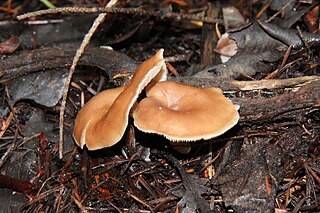
Rhizocybe is a genus of fungus in the order Agaricales. The species resemble Clitocybe and grow amongst litter in predominantly coniferous forests.
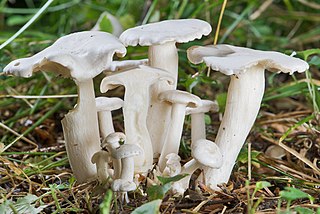
Leucocybe is a recently defined mushroom genus in the family Tricholomataceae. The species resemble Clitocybe and grow in forests or disturbed areas.
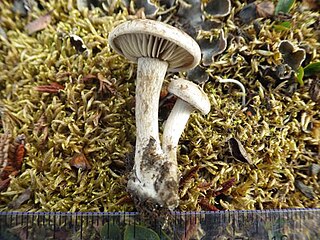
Atractosporocybe is a mushroom genus in the family Tricholomataceae in the broad sense. The type species resembles Clitocybe and grows in forests.

The Crassisporiaceae is a mushroom family of small brown, naucoroid, brown-spored agarics with thick to slightly thickened, smooth, basidiospore walls that darken to reddish brown in potassium hydroxide (KOH) solution, absence of chrysocystidia, presence of cheilocystidia, nongelatinized tissues in the lamellae, and a filamentous pileus cutis. The family is recognized based upon phylogenetic analyses using DNA sequences and depending upon the analyses varies in relationship to either the Cortinariaceae or, as described in greater detail prior to recognition as a separate family, near the Strophariaceae. Crassisporium is pyrophilous and Romagnesiella may be bryophilous.
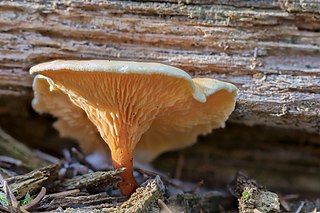
Bonomyces is a genus of fungi in the family Biannulariaceae. Basidiocarps are agaricoid, similar to those of Clitocybe, but with a distinctly hard stipe (stem). The genus is separated on DNA characteristics as well as morphology. Species are known from Europe, North Africa, and northern China.
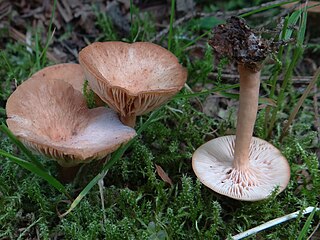
Bonomyces sinopicus is an agaricoid species of fungus in the family Biannulariaceae with a European districution. It has been given the recommended English name of spring funnel. The species was formerly placed in the genus Clitocybe, but has been separated on DNA characteristics.
References
- ↑ "Melanoleuca privernensis (Consiglio, Contu, Setti & Vizzini) Consiglio, Setti & Vizzini 2010". MycoBank. International Mycological Association. Retrieved 2010-12-07.
- ↑ Consiglio G, Contu M, Setti L, Vizzini A (2008). "Kinia, a systematically-cryptic new genus of Agaricomycetes (Basidiomycota) from central Italy". Rivista di Micologia. 51 (4): 291–99.
- ↑ Vizzini A, Consiglio G, Setti L (2010). "The agaricoid genus Kinia is a new member of the Pluteoid clade subordinate to Melanoleuca" (PDF). Mycosphere. 1 (2): 141–45.